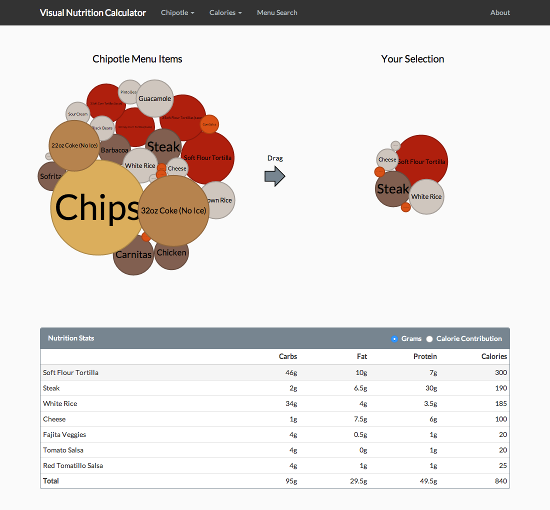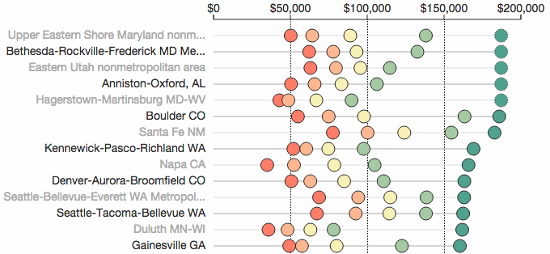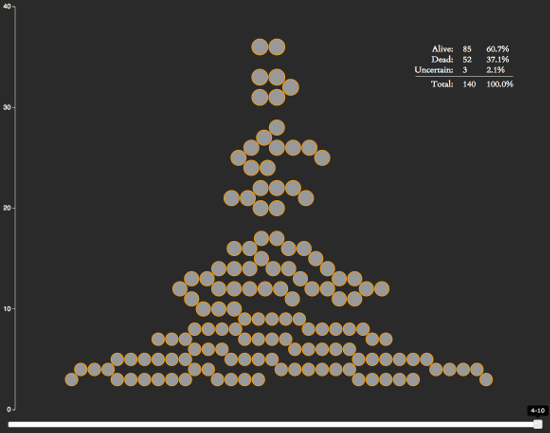McDonald’s is running their annual Monopoly Game until the end of the month. The highest prize is $1,000,000 – which goes to the lucky soul who’s able to find the coveted Boardwalk stamp amongst the 651,841,628 game pieces. That equates to every person in the US eating 2 Big Macs before the prize is guaranteed to be given out. Even the odds of winning the Powerball jackpot are higher (1 in 175,223,510), and its minimum jackpot is $40 million.
Our brains aren’t really wired to intuitively grasp probabilities, and the marketing departments of big companies know this. With McDonald’s eclectic mix of a hand full of large prizes and a ton of small prizes, it’s clear they’ve put some serious research into what will get customers through their doors. And it works. Hell, the only time of year I eat at McDonald’s is when they run this contest – though I always sort of regret it later. It’s a fun contest, but I think knowing the odds gives you a more clear picture of what to expect.
The Basics
-
There are 651,841,628 game pieces in play. Each game piece contains 2 stamps.
-
156,210,425 prizes will be given out.
-
The prizes falls into 4 categories: food prizes, instant wins, online prizes, and monopoly prizes. See the below table for a statistical breakdown.
|
Prize Category
|
Number of Prizes
|
Odds of Winning
|
|
Food
|
128,769,022
|
19.75%
|
|
Instant Win
|
25,780,151
|
3.95%
|
|
Online
|
1,661,242
|
??? (see below)
|
|
Monopoly
|
1,359
|
0.0002084862245%
|
Chance of Winning Illusion
There might be some interesting psychology going on with how the game is played. Each game piece is 2 stamps, making you feel like you have 2 chances to win. However, the official rules only talk about the odds of game pieces, not stamps. This makes me wonder if only the game pieces matter, which would mean that at least one stamp on a game piece is always a loser. This would mean that half of the stamps you peel are just there for psychological effect of playing the game. You end up feeling like you have twice as many chances to win, when in reality, its just an illusion.
Unfortunately it’s hard to confirm this hypothesis. If the odds of a game piece winning are 25%*, then each stamp should have an individual winning probability of 13.4%**. This means the odds of both stamps winning on a game piece are 1.8%***. This means you’d need a really large same set to confirm that both pieces can’t win. I have around 56 stamps from friends and family, none of which were double winners – but that doesn’t mean much, since the odds of getting a double winner with 28 game pieces is only 40% (1 – 0.982^28). To be over 99% certain that double winning pieces don’t exist, you’d need to peel at least 254 game pieces.
This is just a theory though, and it could all be easily disproven if a double winning stamp shows up. This should happen 1.8% of the time, so if you’re really hungry you can test this out.
* The rules claim you have a 1 in 4 (25%) chance of being a winner. However, this number is rounded. If you add up the number of prizes and compare it with the number of pieces, you see that the number is closer to 24%.
** I worked backwards for this number by finding the probability of both stamps not winning: (1 – 0.134) * (1 – 0.134) = ~75%
*** Both stamps winning would have a probability of 0.134 * 0.134 = ~1.8
Odds for Rare Pieces
I’ve seen some sites structure their odds around finding a complete monopoly, but that’s just silly. There are only two types of pieces: rare ones, and ones that show up all of the time. If you find one of the rare pieces, you’ve basically won the prize.
|
Stamp
|
Odds
|
Prize
|
Number Available
|
|
Mediterranean Avenue
|
1 in 651,842
|
$50
|
1000
|
|
Vermont Avenue
|
1 in 144,583,163*
|
Free Gas for a Year ($2,350 ARV)
|
4
|
|
Tennessee Avenue
|
1 in 2,429,970
|
Mobile Wallet Prize ($3,150 ARV)
|
238
|
|
Virginia Avenue
|
1 in 690,723,394
|
$5,000
|
5
|
|
Short Line
|
1 in 57,833,265
|
$5,000 Target Shopping Experience
|
10
|
|
Ventnor Avenue
|
1 in 8,691,222
|
Beach Resort Vacation ($6,500 ARV)
|
75
|
|
Kentucky Avenue
|
1 in 32,592,082
|
Delta Vacation ($7,500 ARV)
|
20
|
|
Water Works
|
1 in 162,960,407
|
$10,000
|
4
|
|
Pennsylvania Avenue
|
1 in 1,686,343,601
|
Cessna Private Jet Trip ($16,900 ARV)
|
2
|
|
Boardwalk
|
1 in 651,841,628**
|
$1,000,000
|
1
|
What do these odds mean? The best analogy I found was on a page for grasping large numbers. It gave the following example of how big 100,000,000 was: if you stacked 100,000,000 one dollar bills on-top of each other, they would reach 6.79 miles into the sky. That’s high enough to touch an airplane at cruising altitude.
* These odds appear to be wrong, as they differ from Water Works which also only has 4 stamps available. However, this is what the rules page lists.
** The Boardwalk odds come from the rule page, however, the winning stamp is apparently guaranteed to be on a Big Mac. If you focus your energy on eating Big Macs, this means your odds of winning are 1 in 37,955,000.
Online Game
Not much has been written about the online game, there are two main reasons for this:
-
There are no set odds. This is because the chances of winning are based on how many people decide to play their pieces online.
-
The prizes are very “meh”. Most of the 1,661,242 prizes are Red Box Rentals (1,400,000) and My Coke Rewards Points (250,000). However, there are a few decent prizes, and there is a top prize of $50,000.
Your odds of winning the $50,000 prize are the number of stamp codes you submit to the total number stamp codes submitted. Based on the 56 game stamps I’ve entered in, 3 were red box rentals. Extrapolating that out, the red box rental odds could be 1 in 20, which would mean McDonald’s expects 28,000,000 stamps to be entered in. This would mean your chance of winning the 50k per game piece would be 1 in 14,000,000. Now, 3 data points is too small a data set to make this assumption, so this should be thought of as just a back of the envelop calculation.
However, assuming these odds were true, that would mean if you spent the next week buying Hash Browns and entering in the max number of stamps a day (10), you could bring your odds of winning the 50k up to 1 in 400,000. This seems like a neat idea until you consider that if you spent the same amount of cash ($35) on Maryland Monopoly Lotto tickets, you would have a 1 in 385,031 chance of winning twice as much.
Food Items with Stamps
For those interested, Hash Browns have the best price to stamp ratio.
|
Name
|
Price
|
# Stamps
|
Price Per Stamp
|
|
Bacon Clubhouse
|
$4.69
|
2
|
$2.35
|
|
Big Mac
|
$3.99
|
2
|
$2.00
|
|
Egg McMuffin
|
$2.79
|
2
|
$1.40
|
|
Egg White Delight McMuffin
|
$2.79
|
2
|
$1.40
|
|
Fruit & Maple Oatmeal
|
$1.99
|
2
|
$1.00
|
|
Filet-O-Fish
|
$3.49
|
2
|
$1.75
|
|
Hash Browns
|
$1.00
|
2
|
$0.50
|
|
Large Fries
|
$2.19
|
4
|
$1.10
|
|
Medium Fountain Drinks
|
$2.49
|
2
|
$1.25
|
|
Medium or Large Hot McCafe Drink
|
$2.59 – $3.39
|
2
|
$1.30 – $1.70
|
|
Premium McWrap
|
$3.99
|
2
|
$2.00
|
|
Sausage McMuffin with Egg
|
$2.79
|
2
|
$1.40
|
|
10-piece McNuggets
|
$4.29
|
2
|
$2.15
|
|
20-piece McNuggets
|
$4.99
|
4
|
$1.25
|
For legal reasons, McDonalds also allows you to request free pieces through the mail. A couple of individuals tried this out by requesting 500 pieces and comparing the outcome to buying 500 hashbrowns. It’s neat as an experiment, but unless you’ve got a lot of free time, you’re best bet is just buying Hash Browns.
Conclusion
Unless you’re in the mood for McDonald’s, don’t make your lunch decision based on the Monopoly Game. If a game of chance is what you’re after, you’re better off playing the lottery. However, if you’re going to McDonald’s anyway, get an item with pieces, as the game does make their food experience a little more fun.



